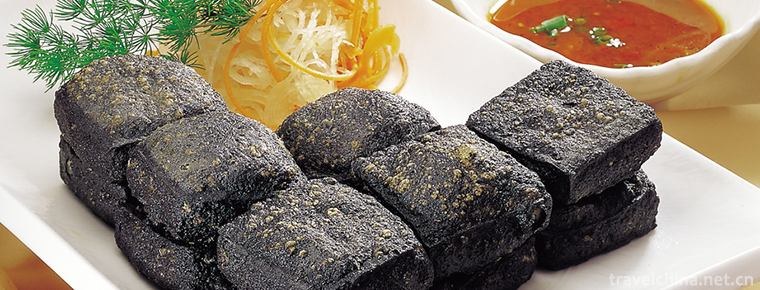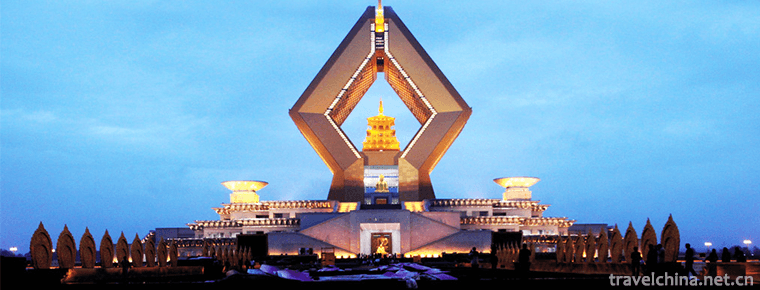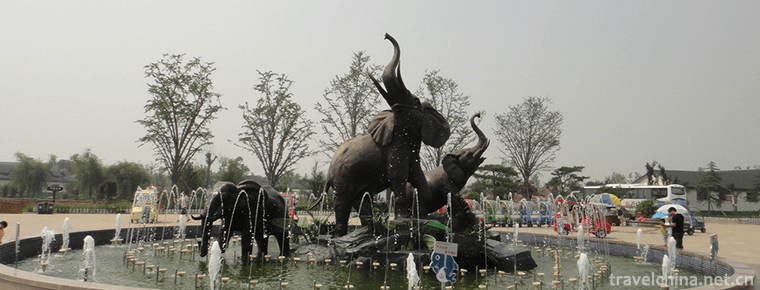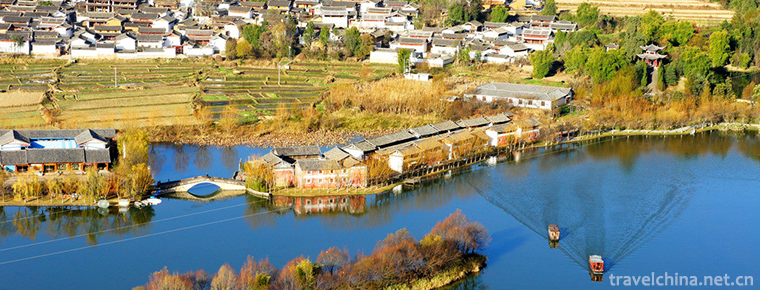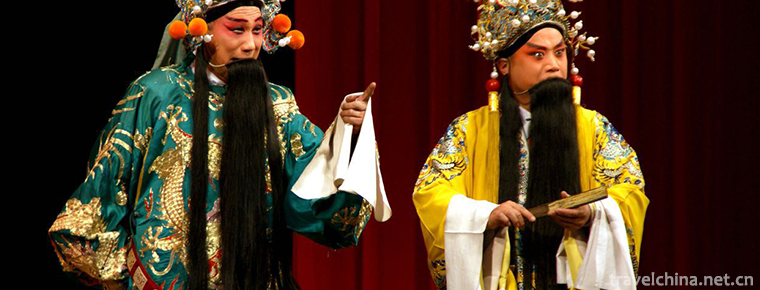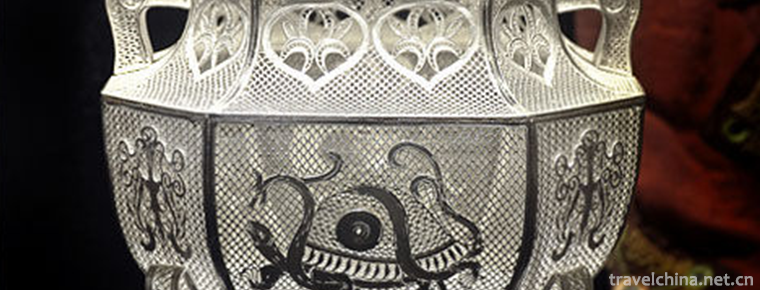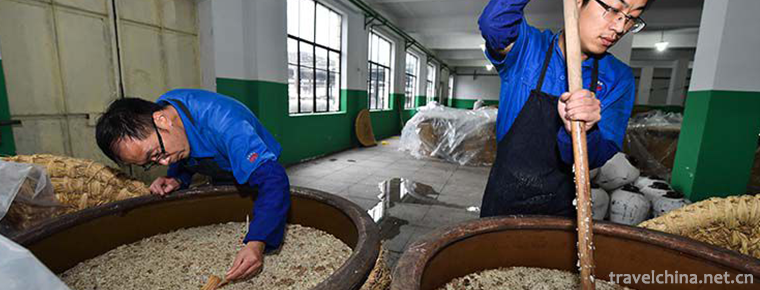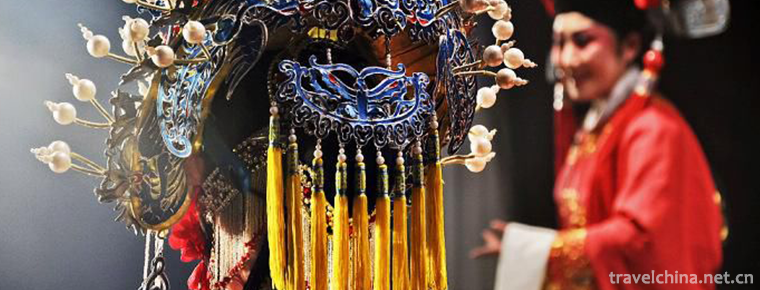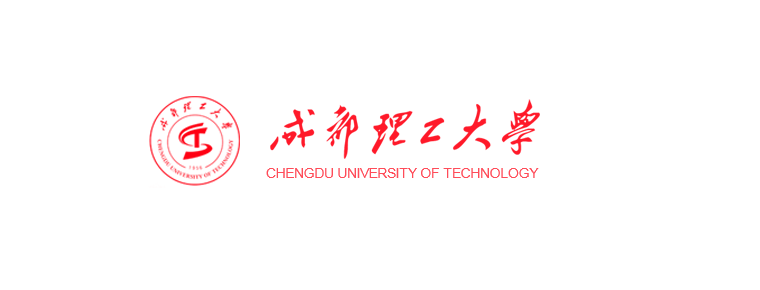Muli Temple
Muli Temple
Muli temple is a key cultural relics protection unit in Sichuan Province. It is located at the foot of daniyabu mountain, youyidian village, Taoba Township, Muli Tibetan Autonomous County. It is more than 300 kilometers away from Xichang City and about 60 kilometers away from the county. It was once one of the largest monasteries of the Yellow Lama in Kangba Tibetan area, and has a special status in the Tibetan area.
Founded in 1656, it is another big temple built after the great temple of warzhai and Kangwu. It was built by Rao jumba sandonsambu, which was built in imitation of the pattern of Lhasa zhebingsi, which lasted for 3 years, covering an area of more than 80000 square meters. Tibetan full name - Muli gerdanxi Zhuqu, larang bagiwalin.
geographical position
Muli temple, which is called muligadan snow bead qulelang bajiwalin in Tibetan language, is located on the West Bank of Wuliang River and the east side of daniab. It is located in youyidian, Taoba Township, with an altitude of 2637 meters. It was built in the 11th ruojingyang fire monkey year of Tibetan calendar (1656 A.D. and 13 years of Shunzhi of Qing Dynasty). It was initially built under the guidance of Lama sangdengrong cloth imitating the pattern of Drepung temple in Lhasa. Backed by the holy mountain "Jiasu salad", the cluster peaks stand tall and handsome. In front of it is the flowing burtang River, surrounded by luxuriant trees, clear mountain springs, and luxuriant trees and flowers. It is just like "when the heaven listens to Dharma, there are thousands of Buddhas hanging down among the purple and green.".
Overview of temples
The building materials of Muli temple are mainly civil engineering, which shows the style of Tang and Ming Dynasties. More than 20 meters high, the main hall of Tibetan fangbao is adjacent to hundreds of lamas and monks. The main building is magnificent and gorgeous. In terms of space combination, the courtyard is overlapped, the corridor is winding, and there are various painted murals and patterns in the hall, pilaster and so on. In the front hall are statues of Amitabha, Maitreya and Manjusri Bodhisattva. In front of the Buddha seat, there is a throne of living Buddha's Dharma chair with brocade umbrella cover hanging on it. It reflects with the top building and banners, which is solemn and solemn. In the rear of the hall, there are 10 statues of high-quality bronze tiles. Inside the hall are statues of Guanyin Bodhisattva, zongkaba (also known as luosangzaba), Panchen and sulangzhaba, the founder of the Yellow religion. In its heyday, there were 770 lamas. It was damaged in 1967. In 1982, it was rebuilt on the original site by state funding and restored to the status quo.
For Muli, we are more through Locke. More than 70 years ago, Locke came to China from afar. He traveled mountains and rivers to such a magical and beautiful place. He called her "the garden of God's browsing", and took her out of the closed village, so that the world could see the magnificent and beautiful mountains and rivers and mysterious amorous feelings. In his travels, Locke wrote, "in my dream, I returned to the land of fairy tales surrounded by mountains - Muli. It is so beautiful and peaceful. I also dream of gold and wealth in the middle ages, mutton and pine torch smeared with butter. Everything is so comfortable, comfortable and beautiful... " It can be seen that most of Locke's trip to Shangri La at that time was completed in Muli.
The reason why paddy City Aden is so famous today is that Locke was the first discoverer and performer. When he arrived here by riding and walking along rivers and mountain paths, he wrote a report on his discovery. Finally, the novel "disappeared horizon" was written by British writers. Finally, the Shangri La cyclone was formed, which swept the world. Many people remember Shangri La, but they don't remember "the garden God browsed". We feel the beauty of nature quietly here. For thousands of years, the wood is like a bright gem inlaid in the high mountains. When we go out here, we can see the green mountains and the green water. We really feel the beautiful place that he called the garden.
Muli temple was the religious and political center of the kingdom of Muli at that time. It was here that Locke got the help of King Muli to complete his investigation plan to Aden. Therefore, we specially visited the Muli temple. Muli temple is one of the three major temples in Muli. It was once one of the largest monasteries of the Yellow Lama in Kangba Tibetan area. It has a special status in the Tibetan area. The road to the Muli temple is S-shaped on the mountain. The mountain road is very narrow and only allows one car to pass in one direction. If there is an opposite car and there is no place to avoid, the people on the bus only have big eyes and small eyes.
At that time, Muli chieftain was ruled by Muli chieftain. In what era, we went back to Locke's world: "it is said that the Muli chieftain began in the Manchu Dynasty. The famous Emperor Yongzheng ascended the throne in 1723 and was presented with a report saying that they were brave in fighting, so they were granted the power to unify Muli forever. Muli chieftain has jurisdiction over 9000 square kilometers of territory, which is slightly smaller than that of Massachusetts in the United States, but only 220000 obedient subjects There are ten Lama temples in the Kingdom, three large and fifteen small.
Now the size of Muli temple is no longer what it used to be. There are many ruins around the main hall, which were left after the former Muli temple was destroyed. From 1656 to 1958, the construction of Muli Temple took more than 300 years of continuous expansion and maintenance, and built a magnificent building group with an area of more than 80000 square meters. The scale of the temple is becoming more and more prosperous. There are many Buddhist temples and many monks' houses. Moreover, there are solemn treasures, many monks, many famous monks, and prosperous Buddhist affairs. There are Xianzong college and Tantric preaching and training department. Therefore, it has become a temple with both Xianzong and Tantra. Therefore, Muli temple is famous and prosperous for a time. There are magnificent halls, scattered monk houses, high, strong and thick white walls, gates on all sides, alleys on all sides, and nearly a thousand lamas live there. It's really brilliant to "ride a horse to pass the mountain gate and smell incense in ten li". It has become the political, religious and cultural center of the famous "Muli Lama kingdom" at home and abroad, and is one of the larger yellow temples in kangzang area.
As soon as you get off the bus, you can smell the fragrance of butter, and the temple is solemn and quiet. Now we can see that the temple was rebuilt and restored to its present status by state funding in 1982. Our arrival broke the original tranquility of the temple. Three or two lamas came into our sight. Seeing our camera lens at them, they were a little shy and smiling. Some were embarrassed, they left their companions and ran away. As the power supply equipment had not been repaired, we spent the first night without electricity in Muli temple hotel. When you light a candle and chat with a Lama in the temple, you know that in fact, the temple is like a university and a museum. It is compatible with the connotation of natural science, society and science. It has all kinds of treasures. No matter you are a devout believer, or an artist, historian, architect, music dancer, etc., you will show each guest its different looks and differences Self feeling. The little Lama told me that it would take at least 13 years to complete all the required courses in the temple, and Xianggen living Buddha was no exception.
Zaxinima, who manages the library, introduces us to the history of Muli temple, and then takes us to a small courtyard outside the temple, saying that this is where the living Buddha of Muli Temple lived as a child. He told us a lot about Locke. The vegetable field outside the courtyard turned out to be a horse shed. On the first night of his arrival, the director of the Temple Management Council said that the younger brother of the living Buddha in Muli temple was still alive and was called Jiayang Badin. This is great news! The next day we bid farewell to Muli temple and went straight to Muli County. The smoke of the early morning has not completely dispersed, and the chanting of sutras still reverberates in the valley. We set foot on the road to Muli.
Building scale
From 1656 to 1958, the construction of Muli Temple took more than 300 years of continuous expansion and maintenance, and built a magnificent building group with an area of more than 80000 square meters. The scale of the temple is becoming more and more prosperous. There are many Buddhist temples and many monks' houses. Moreover, there are solemn treasures, many monks, many famous monks, and prosperous Buddhist affairs. There are Xianzong college and Tantric preaching and training department. Therefore, it has become a temple with both Xianzong and Tantra. Therefore, Muli temple is famous and prosperous for a time. There are magnificent halls, scattered monk houses, high, strong and thick white walls, gates on all sides, alleys on all sides, and nearly a thousand lamas live there. It's really brilliant to "ride a horse to pass the mountain gate and smell incense in ten li". It has become the political, religious and cultural center of the famous "Muli Lama kingdom" at home and abroad. It is one of the larger yellow temples in kangzang area. The whole building can be roughly divided into four parts: Cuoqin, Qula, Lama Yamen and monk's house.
Tsochin
Cuoqin Dajing hall is the largest Hall of the temple and the main activity center of the whole temple. It is located in the middle of the whole building group. The grand Sutra hall is a large Tibetan art building with 108 pillars on the third floor and one floor. There are eight towering "Tongtian pillars" in the middle. At the same time, it can accommodate thousands of people to sit down and recite sutras. The important ritual activities of the whole temple are carried out in this hall.
The ground floor is the lobby. In the middle of the upper part is a gold statue (copper gilded statue) of the founder of the sect, master zongkaba. On both sides are the statues of jiacuojie and kezhujie. There are also Buddha Sakyamuni, Green Tara and other gold statues. On both sides, there are tall wooden Sutra bookcases with thousands of Tibetan scriptures mainly composed of Ganzhuer and danjure. There are various wonderful drawings of Buddha and Bodhisattva on the wall. At ordinary times, there are two "guonier" (incense burner) on duty, responsible for management, cleaning, water supply lamp, reception pilgrims. The interior of the hall is decorated with exquisite and smooth parquet, high double lion throne, oil lamps and rows of monks' seats. The layout is ingenious and properly combined with the light. The wonderful paintings on the four walls are decorated with colorful curtains, banners and buildings made of silk. When nearly a thousand people chant in unison, the hall is full of cigarettes and the chants are thunderous. The scene is very spectacular. There are two small halls behind the hall. On the left is the great Vader Vajra hall. There is a statue of the Bodhisattva Vajra. Usually, there is a Lama on duty. Recite Vajra Sutra every day. On the right is the stupa hall. There is a gilded stupa inside, which is the Dharma body of the fifth generation of Muli Xianggen, Aung Weng descending white badinggyatso. Usually one person on duty, chanting scriptures every day.
The second floor is surrounded by light, and the third floor is supported by eight central pillars. In the middle, the courtyard is shaped like a circle, forming an ambulatory. The corridor is covered with all kinds of colored silk Buddha Thangka. In addition, there is a unique Mandala hall with a set of three-dimensional Vajra mandarins. Mandala is an indispensable part of Buddhism's study of tantra. On the right is the wuliangshou Buddha Hall. The walls are covered with small niches, and there are thousands of gilded bronze statues of wuliangshou Buddha. There are people on duty every day and praise longevity Scripture. There is also a Bodhisattva Hall of the God of wealth, with white and silver statues of five heavenly daughters. One person on duty chants Scriptures every day.
The third floor is the living Buddha's bedroom. The living Buddha's bedroom, sutra hall, study room, lecture hall, reception hall, kitchen, and housekeeper's room are arranged.
The fourth floor is the storage room for sundries. The top of the roof is a herringbone roof covered with wood, with gentle and smooth slope. On the top of it are towering golden roofs, Falun, fachuang, Jinlu and so on. These exquisite gilt decorations are towering and magnificent, which make people look at them with awe and awe.
Nianjiangdian
"Nianjiang" is the name of a Dharma protector. In Tibetan Buddhist temples, the Dharma protection hall is built at the back or outside of the main Buddha Hall, where statues of Dharma protectors are worshipped. "Nian Jiang" is one of the main Dharma protectors of Muli temple. Nianjiangdian was named as legab and other Dharma protectors. The scale is 48 capitals, the second floor and the first floor.
At the bottom of the hall, there are five Dharma protectors, such as Puxian Bodhisattva, lianhuasheng master, benzung daduid Vajra, Matou King Bodhisattva, and Dharma protector nianjiang. The five Dharma protectors are gilded statues of the king of gombufa, badenham and the God of wealth. It is a powerful and brave Dharma protector. It has three heads and six arms. It is decorated with tiger clothes and bones. It has teeth and grins. It has a big arm and a round waist. It holds a magic wand and holds up a sharp sword. It has a locked eyebrow and a wide range of angry eyes. There are full-time lamas chanting Buddhist scriptures and chanting mantras. There are morning bells and evening drums, cigarettes and gongs. There are many swords and spears around the pillars in the hall (which are voluntarily provided by religious believers, mainly hunters' swords, which means to change evil and return to normal, "put down the butcher's knife, and become a Buddha on the spot"), which makes people fear and exaggerate the dignity and mysterious atmosphere of the temple.
On the second floor, two long columns in the middle are straight to the third floor. There are more than ten rooms, part of which are astronomy and almanac teaching and research section. The rest are the dormitories for security personnel of the Grand Lama Yamen.
Duga Hall
There are 16 pillars on the left side of the main hall. The second floor and the first floor of the Duga Hall - the great white umbrella Buddha mother hall. Inside the hall is a three story clay statue of a Buddha mother with a thousand heads and a big white umbrella. The statue of Buddha is unique in shape, solemn and natural in posture, holding a big white umbrella. It not only has the dignity of "heaven and the world, but also has the benevolence and Holy Spirit of the Buddha mother's great mercy and tolerance. (some books say that the hall is called Guanyin hall, and the Buddha statue is written as Guanyin Bodhisattva, which is wrong). There is usually a person on duty here. Small Buddhist activities are held once a month, and a large prayer is held once a year.
To draw a chapter
On the lower left side of the main hall is a tall building, which is the Lama's Lama's Lama's Lama's Lama's Lama's Lama's Lama's Lama's Lama's Lama's Rajah (yamen) is located at the lower left side of. It is a comprehensive building of Muli chieftain's office, court, scripture hall, dormitory, prison, conference room, etc.
Teahouse
There is a big kitchen at the corner of the square in the front of the hall. It is the place where the monks cook tea and cook when they hold collective activities such as chanting sutras and Dharma meetings. There are five large bronze pots with a diameter of 1.5 m to 2.5 m and a depth of 0.5 m to 1.3 M. In the copper pot, there are Tibetan chants and the date of casting, both of which were cast in the ninth year of Daoguang period in the Qing Dynasty.
Xikang
Xikang is located at the back of the main hall, which is the office building of "Gensong" (Management Committee) of Muli temple. There are scripture hall, offices, conference hall and warehouse. All the major and minor affairs of the temple were discussed and decided to pass.
Qiangbakang
Qiangbakang (Maitreya Hall) is located at the North lower side of the main hall. It is a grand building with three floors and one floor. There is a 26.73 meter high bronze statue of Maitreya Buddha sitting in the hall. The fourth generation of Muli Lama ciqirongbu and the third generation of Muli Xianggen angweng gongqiu jointly raised funds and agreed to start construction in the 12th raojing golden rabbit year (AD 1711) of the Tibetan calendar. It took three years and was completed in April of the year of shuishe (1713). In the process of casting, he got the boundless kindness of the fifth Panchen master Luorong Yixi, and bestowed the treasures in the Buddha statue: the Buddhist and Bodhisattva's sarira, the Dharma clothes of the heard arhat, the master's vestments, as well as precious and rare things such as jewelry, snake heart sandalwood, exotic flowers and plants, ruby, yingqingshi, sapphire, tiaga, Ruyi diamond and other rare things. The collection of all things in the world, beyond the imagination, indescribable, total up to ten pack, stored in various parts of the Buddha body.
Maitreya hall is a typical civil structure, a Tibetan building with a four story hall. The scale is grand, the momentum is magnificent, and the architectural technique is unique. The golden statue of Maitreya Buddha is worshipped in the middle of the hall, sitting firmly on the throne of Xumi on the first floor. The four story Giant Buddha statue is solemn and natural, reasonable in layout, accurate in structure, plump and mellow in image and elegant in appearance. His ears are drooping over his shoulders. His golden face is kind and wise. The throne of Xumi's Dharma platform is exquisite in workmanship and gorgeous in decoration. The top temples and back lights are inlaid with numerous jewels, which make the Golden Buddha more solemn and dignified, magnificent, holy and dazzling. The boundless benevolent eye gazed at all living beings, and the gesture performed by his hands showed a solemn, compassionate and fraternal manner.
The hall has a large area, with a lion in the middle of the throne on the ground floor. There are no windows on the four walls. It is mainly illuminated by butter lamps, which makes the atmosphere more solemn and dignified. This is also the traditional feature of the layout and space treatment of Tibetan Buddhist temples.
The second floor is the main hall. There are large windows on all sides. The lighting is good and the Buddha statues are highlighted. The cloister and the unique railings, pilgrims can worship around the Buddha. The capitals, beams and arches are carved with exquisite patterns, forming a colorful art world. All kinds of exquisite murals are painted on the walls of the East and the West. They are gorgeous in color, exquisite in composition and mysterious in content. The interior hall is decorated with brilliance. This kind of decoration is skillfully combined with art, appropriate and harmonious. On both sides of the bookshelves, there are several hundred volumes of Tibetan scriptures, such as pearl sand, gold and silver, agate, etc., which are made into color juice, a Tibetan scripture "Ganzhuer" written with a gold pen, and hundreds of Tibetan scriptures such as 101 letters. There are two people on duty here. There were two groups of chanting sutras group. A group of four people read "ganjul" every day, a complete set of recitation once a year. Another group for two people, daily recitation of "secret set of Vajra Sutra" and so on, throughout the year. In addition, there are some regular and large-scale Buddhist activities. The butter lamps that never go out all the year round are shining with dim yellow light; the paipaipai holy water that is replaced every day is so clear that there is no dust; the lifelike butter flowers are wonderful and colorful; the long fragrance is wafting with blue smoke, and the whole hall is filled with smoke, the chanting sound, the Buddha light is brilliant, and the turbid soul is purified here.
3、 There are also corridors on the fourth floor for people to visit the Buddha. In addition, there are several cabins for painting and tailors. On the roof, there are various kinds of tall copper gilded pagodas, Falun and other gold roofs, which decorate qiangbakang with glitter and brilliance, and complement the Cuoqin hall.
The above buildings are located in the middle of the building. There are more than 400 households on the gentle slope of the north and south. Each family has its own courtyard, forming a patchwork of streets and alleys. It seems that one room is higher than another. Every 10 households have a "Jue ban" (10 household officials).
Most of the monks' houses in Tibetan architecture have two floors and one floor. The first floor is covered with sundry firewood sheds. The second floor is occupied by people. The top floor is free space. The master and apprentice live together, and there are several brothers living together (many families often have several brothers who become monks), and basically each has its own room. The room is not big, but spotless. There are niches for Buddha and Bodhisattva, and lamps for water every day. There are bookcases full of scriptures, walls full of Thangka, and small Sutra halls. These make people feel that temple life is poor but rich. In these long years, they were accompanied by the happiness of Dharma that the common people couldn't feel, and the longing for themselves and all living beings to become Buddhas.
Qula
After walking through the monk's house, it is a beautiful "temple in the temple" - Qula temple. There are dense trees, green grass, birds and flowers in the courtyard, and the environment is extremely quiet, giving people the feeling of "another village with hidden willows and bright flowers". Qula temple is the Xianzong College of Muli temple. It is called village you ZHACANG in Tibetan language. It was founded by the fifth generation of Muli Xianggen, Aung Weng badinggyatso. According to the order of learning Tibetan Buddhism, regular monks must first enter Xianzong college. There is a sutra hall on the first floor and a half open lecturing platform. There must be a strict system of learning classics, with seven classes, and a system of debate and annual examination. Qula temple, with the scripture hall as the center, on the left and right sides are the lecturing platform and the scripture printing tower. Another teahouse will be set up. Qula temple has its own walls.
The Sutra hall on the first floor and the first floor has 36 capitals. The ground floor is the main hall where large-scale collective chanting activities are held. There are statues of Buddha Sakyamuni, master Tsongkhapa, Damu, sixteen Arhats, banxiang sorangzhaba, Lama sangding flannelette, Xianggen badinggyatso, and sidajinze. The three walls are full of wonderful and rich drawings, including 80 Buddhist scriptures, 21 Buddha Du Mu, 8 pharmacists, Avalokitesvara, Dharma king and Gongbu, as well as portraits and deeds of important historical figures in the past dynasties. On the second floor, there are several rooms, such as Tibetan Scripture building and Vajra hall. There are nearly a thousand sutras mainly collected in the Sutra building, which are placed in the bookshelves of Tibetan wooden cabinets in order. All the Scriptures are wrapped in envelopes made of brocade and satin.
Yinjing building, first floor and first floor. All the teaching materials of the temple are collected. There are nearly ten thousand long Tibetan woodblock printing plates, such as "five great treatises", "Vajra Sutra", "sectarianism theory" and "interpretation quantity theory". There are also hundreds of engravings of Buddhas and Bodhisattvas, Arhats, Dharma protectors, various incantations and prayer flags. The whole process of printing from plate making, printing to cutting and assembling is operated by hand. Yinjing building is only managed by specially assigned personnel, and there is no business circulation organization. The printed and published scriptures mainly focus on the teaching materials, the practice of practicing Dharma and the recitation of scriptures. Therefore, it does not pay attention to economic benefits. However, it has made a certain contribution to enriching Tibetan cultural treasure house, spreading, exchanging and developing Buddhist culture.
On the right side of the Sutra hall, there is a semi open lecturing platform and a "Qula" for the debate of seven teams, which means the Dharma garden. The so-called Qula temple is named after it. There is a fixed lecturing throne in the middle of the Dharma platform. Three walls are painted with various exquisite murals. There are portraits of "two victories and six solemnity in the South supporting the state".
There are three halls with herringbone roof and small and exquisite gold-plated copper pagoda. The garden is full of ancient trees, grass and flowers. Wearing purple cassock and yellow hat, a group of Buddhist monks clapped their hands and chanted, waving their rosary beads, which were very dynamic and answered like a stream. Among the green and dribbling mountains and forests around, birds were singing joyful songs. Small bells under the eaves were tinkling in the breeze, playing the wonderful sounds of heaven. The long sound of Dharma conch blew out the ancient myth, and the heavy Dharma Drum rang through The temple is not only a place for religious activities, but also a cultural heritage base and art treasure house of the Tibetan nationality. In the course of more than 300 years, the Muli temple has been protected by the benefactors of the past dynasties of fragrant roots and lamas, as well as the merits and virtues of monks and laymen It is a large-scale and splendid architectural group with Tibetan Buddhist characteristics. In addition to the construction of magnificent Buddha halls, solemn and solemn Buddha statues and exquisite and fluent mural art, there are also many ancient and highly skilled thangkas, beautiful and refined various precious offerings, magic utensils and other cultural relics. In particular, the thirty-five pairs of specially refined thangkas presented by the eighth Dalai Lama to Muli, the Tibetan Scripture Ganzhuer written with gold, silver, agate and other jewelry into colored juice, pure gold into juice, and the "hundred thousand Ode to Prajna" written with a gold pen on black gold paper. The collection includes the woodblock Tripitaka "Ganzhuer" and "danzhur", and the complete works of three masters and disciples of zongkaba, As well as the famous Tibetan Buddhist master's masterpiece Sutra mantra. The size of the statue of Dutchman. Gold lanterns, silver bowls and porcelain offerings are not only priceless treasures of Tibetan Buddhism in Muli, but also treasures of the Chinese national library.
The temple is like a university, also like a museum. It is compatible with the connotation of natural science, society and science. All kinds of treasures belong to Buddhism. No matter you are a devout believer, as well as artists, historians, architects, music dancers, etc., the temple shows its different looks and feelings to each guest.

-
Huizhou stinky tofu
The common name of stinky tofu in Huizhou is "Big Dumb and stinky", which is a characteristic traditional snack in Huizhou, Anhui Province..
Views: 188 Time 2018-11-27 -
Shanghai Science and Technology Museum
Shanghai Science and Technology Museum is a comprehensive natural science and technology museum with Chinese characteristics, times characteristics and Shanghai characteristics.
Views: 509 Time 2018-12-05 -
Famen Temple Buddhist Cultural Scenic Area
Famen Temple Cultural Scenic Area is located in Famen Town, 10 kilometers north of Fufeng County, Baoji City, Shaanxi Province. It is 110 kilometers east of Xi'an City and 90 kilometers west of Baoji .
Views: 255 Time 2018-12-12 -
Guanlan Lake Leisure Tourist Area
Shenzhen Guanlanhu Leisure Tourist Area, in May 2011, was awarded the National 5A Tourist Scenic Area, located in Shenzhen, Guangdong Province..
Views: 168 Time 2018-12-12 -
Linyi Animal and Botanical Garden
Linyi Animal and Botanical Garden is a national AAAA-level tourist attraction , located at the core of Linyi Economic and Technological Development Zone, Shandong Province.
Views: 222 Time 2018-12-22 -
Guanyin Gorge Scenic Area
Guanyinxia scenic spot is the entrance of Yulong Pass, one of the six major parks of Lijiang Bazi. It is located at the "Yulong Pass" of the three major parks of Lijiang Bazi and is known as.
Views: 268 Time 2019-01-13 -
North Road Bangzi
Bangzi, also known as Shanglu Opera, is a local traditional drama in Datong, Shuozhou, Xinzhou and parts of Inner Mongolia and Hebei in northern Shanxi Province. It is one of the national intangible c.
Views: 152 Time 2019-04-04 -
Production Techniques of Silk in Chengdu
Silk is the most distinctive traditional gold and silver handicraft of the Han nationality in Chengdu. This metal craft has a history of more than 1700 years. It has reached a very high artistic level.
Views: 209 Time 2019-04-18 -
Brewing Techniques of Shaoxing Yellow Rice Wine
Shaoxing has a long history of brewing wine, which can be traced back to the Spring and Autumn Period and the Warring States Period. By the time of the Northern and Southern Dynasties, it was well-kno.
Views: 161 Time 2019-06-14 -
Yanbei Playing with Children
Yanbei children's play, also known as cough cavity, is popular in Datong City, Shanxi Province and its surrounding traditional drama, one of the national intangible cultural heritage..
Views: 149 Time 2019-07-10 -
Chengdu University of Technology
Chengdu University of Technology was founded on March 15, 1956 and approved by the State Council. On March 27, the Ministry of Higher Education and the Ministry of Geology jointly issued a paper based.
Views: 129 Time 2019-08-31 -
Leshan peoples life
By the end of 2018, the per capita disposable income of rural residents in Leshan City was 15173 yuan, an increase of 8.9%, and the per capita living consumption expenditure was 12309 yuan, an increase of 9.5%. The per capita disposable income of urban residents .
Views: 294 Time 2020-12-17
